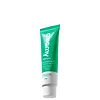What's inside
What's inside
 Key Ingredients
Key Ingredients

 Benefits
Benefits

 Concerns
Concerns

 Ingredients Side-by-side
Ingredients Side-by-side

Water
Skin ConditioningCyclopentasiloxane
EmollientCetearyl Olivate
Propanediol
SolventSorbitan Olivate
EmulsifyingPersea Gratissima Oil
Skin ConditioningPentylene Glycol
Skin ConditioningCoco-Caprylate/Caprate
EmollientDipentaerythrityl Hexacaprylate/Hexacaprate
EmulsifyingPhytosterols
Skin ConditioningGlyceryl Caprylate
EmollientButylene Glycol
HumectantSodium Acrylates Copolymer
4-T-Butylcyclohexanol
MaskingTocopheryl Acetate
AntioxidantBisabolol
MaskingOlea Europaea Fruit Oil
MaskingGlycerin
HumectantSargassum Filipendula Extract
Skin ProtectingLecithin
EmollientHypnea Musciformis Extract
Skin ProtectingDimethicone/Vinyl Dimethicone Crosspolymer
Skin ConditioningSodium Gluconate
Skin ConditioningCaprylic/Capric Triglyceride
MaskingGlyceryl Undecylenate
EmollientSorbitan Oleate
EmulsifyingCentella Asiatica Extract
CleansingAscorbyl Palmitate
AntioxidantHydroxymethoxyphenyl Decanone
Skin ConditioningSodium Benzoate
MaskingPotassium Sorbate
PreservativeDextran
Palmitoyl Tripeptide-8
Skin ConditioningWater, Cyclopentasiloxane, Cetearyl Olivate, Propanediol, Sorbitan Olivate, Persea Gratissima Oil, Pentylene Glycol, Coco-Caprylate/Caprate, Dipentaerythrityl Hexacaprylate/Hexacaprate, Phytosterols, Glyceryl Caprylate, Butylene Glycol, Sodium Acrylates Copolymer, 4-T-Butylcyclohexanol, Tocopheryl Acetate, Bisabolol, Olea Europaea Fruit Oil, Glycerin, Sargassum Filipendula Extract, Lecithin, Hypnea Musciformis Extract, Dimethicone/Vinyl Dimethicone Crosspolymer, Sodium Gluconate, Caprylic/Capric Triglyceride, Glyceryl Undecylenate, Sorbitan Oleate, Centella Asiatica Extract, Ascorbyl Palmitate, Hydroxymethoxyphenyl Decanone, Sodium Benzoate, Potassium Sorbate, Dextran, Palmitoyl Tripeptide-8
Water
Skin ConditioningHydrogenated Polyisobutene
EmollientDimethicone
EmollientGlycerin
HumectantButyrospermum Parkii Butter
Skin ConditioningPanthenol
Skin ConditioningZea Mays Starch
AbsorbentPropanediol
SolventButylene Glycol
HumectantCetyl PEG/PPG-10/1 Dimethicone
EmulsifyingTrihydroxystearin
Skin ConditioningCentella Asiatica Leaf Extract
Skin ConditioningPolymnia Sonchifolia Root Juice
Skin ConditioningZinc Gluconate
Skin ConditioningMadecassoside
AntioxidantManganese Gluconate
Skin ConditioningAlpha-Glucan Oligosaccharide
CleansingSilica
AbrasiveAluminum Hydroxide
EmollientMagnesium Sulfate
Mannose
HumectantCapryloyl Glycine
CleansingCaprylyl Glycol
EmollientVitreoscilla Ferment
Skin ConditioningCitric Acid
BufferingTrisodium Ethylenediamine Disuccinate
Lactobacillus
Skin ConditioningAcetylated Glycol Stearate
EmollientMaltodextrin
AbsorbentPolyglyceryl-4 Isostearate
EmulsifyingTocopherol
AntioxidantPentaerythrityl Tetra-Di-T-Butyl Hydroxyhydrocinnamate
AntioxidantTitanium Dioxide
Cosmetic ColorantWater, Hydrogenated Polyisobutene, Dimethicone, Glycerin, Butyrospermum Parkii Butter, Panthenol, Zea Mays Starch, Propanediol, Butylene Glycol, Cetyl PEG/PPG-10/1 Dimethicone, Trihydroxystearin, Centella Asiatica Leaf Extract, Polymnia Sonchifolia Root Juice, Zinc Gluconate, Madecassoside, Manganese Gluconate, Alpha-Glucan Oligosaccharide, Silica, Aluminum Hydroxide, Magnesium Sulfate, Mannose, Capryloyl Glycine, Caprylyl Glycol, Vitreoscilla Ferment, Citric Acid, Trisodium Ethylenediamine Disuccinate, Lactobacillus, Acetylated Glycol Stearate, Maltodextrin, Polyglyceryl-4 Isostearate, Tocopherol, Pentaerythrityl Tetra-Di-T-Butyl Hydroxyhydrocinnamate, Titanium Dioxide
 Reviews
Reviews

Ingredients Explained
These ingredients are found in both products.
Ingredients higher up in an ingredient list are typically present in a larger amount.
Butylene Glycol (or BG) is used within cosmetic products for a few different reasons:
Overall, Butylene Glycol is a safe and well-rounded ingredient that works well with other ingredients.
Though this ingredient works well with most skin types, some people with sensitive skin may experience a reaction such as allergic rashes, closed comedones, or itchiness.
Learn more about Butylene GlycolGlycerin is already naturally found in your skin. It helps moisturize and protect your skin.
A study from 2016 found glycerin to be more effective as a humectant than AHAs and hyaluronic acid.
As a humectant, it helps the skin stay hydrated by pulling moisture to your skin. The low molecular weight of glycerin allows it to pull moisture into the deeper layers of your skin.
Hydrated skin improves your skin barrier; Your skin barrier helps protect against irritants and bacteria.
Glycerin has also been found to have antimicrobial and antiviral properties. Due to these properties, glycerin is often used in wound and burn treatments.
In cosmetics, glycerin is usually derived from plants such as soybean or palm. However, it can also be sourced from animals, such as tallow or animal fat.
This ingredient is organic, colorless, odorless, and non-toxic.
Glycerin is the name for this ingredient in American English. British English uses Glycerol/Glycerine.
Learn more about GlycerinPropanediol is an all-star ingredient. It softens, hydrates, and smooths the skin.
It’s often used to:
Propanediol is not likely to cause sensitivity and considered safe to use. It is derived from corn or petroleum with a clear color and no scent.
Learn more about PropanediolWater. It's the most common cosmetic ingredient of all. You'll usually see it at the top of ingredient lists, meaning that it makes up the largest part of the product.
So why is it so popular? Water most often acts as a solvent - this means that it helps dissolve other ingredients into the formulation.
You'll also recognize water as that liquid we all need to stay alive. If you see this, drink a glass of water. Stay hydrated!
Learn more about Water